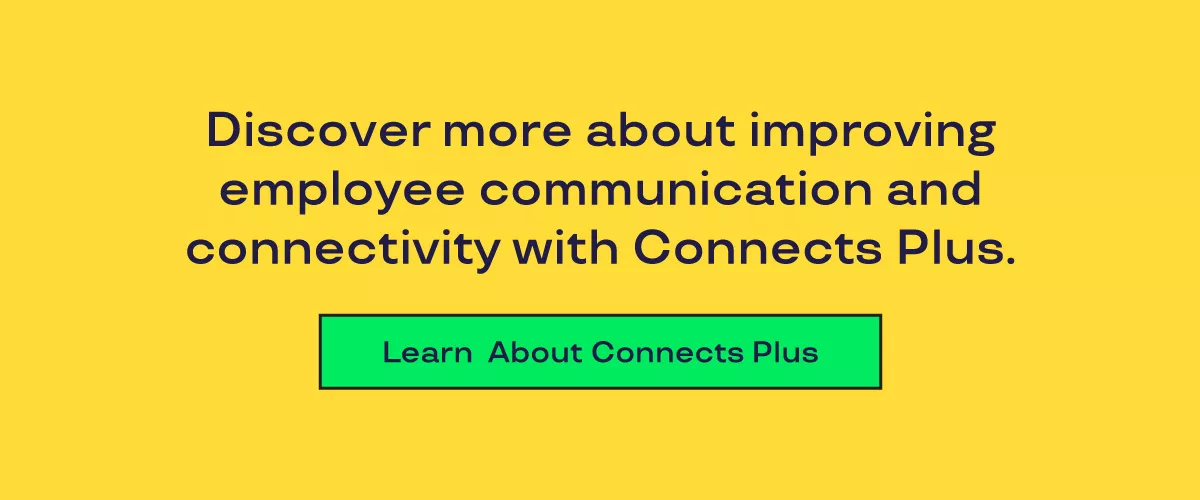
Revolutionizing HR Communication Strategy for Organizational Success
January 25, 2024
The importance of communication in the workplace should come as no surprise – it’s the backbone of any and all organizational success.
Effective, transparent communication boosts everything from employee morale and retention rates to alignment with company values and productivity.
While there are many approaches to improving communication between colleagues or between management and employees, there’s one area that simply cannot be overlooked: human resources communication strategy. From aligning with broader objectives to fostering enhanced employee engagement, conflict resolution and change management, an effective communication strategy orchestrated by HR is the linchpin that binds the various facets of a thriving organization.
Here’s what you need to know about revolutionizing your HR communication strategy.
Importance of an HR Communication Strategy
An organization’s HR department not only manages employees but also sets the tone of dialogue that resonates throughout the organization. It’s critical for fostering a positive workplace culture, aligning employees with organizational goals, and ensuring the overall success and sustainability of the organization.
What is HR communications? It’s the driving force behind internal communications, sharing information internal to the organization about training, benefits, events, announcements and any other company news. When done effectively, it’s the bridge between employees and leadership.
The benefits of a strong HR communications strategy include:
- Alignment between employees and organizational goals and values
- Enhanced employee engagement and morale
- Improved conflict resolution and change management
- Compliance and policy dissemination
- More effective onboarding, training and upskilling
- Boosted productivity and profitability
Sometimes that communication is easier said than done, though. Past research by Gallup found that 74 percent of employees feel as though they’re missing out on company information and news, leading to those employees feeling disconnected from their work and organization.
That’s why having a concerted, intentional strategy for communication in the workplace is so critical. Yet, 60 percent of companies don’t have a long-term internal communication strategy and, of those who do, few are measuring the effectiveness of the efforts.
Regular Communication To Enhance Employee Engagement
Consistent communication is key. Regular updates help keep employees in the loop about what’s going on at the organization, fostering transparency and trust. In a culture of open communication, employees feel valued and informed – which is critical for bringing them into the folds and boosting engagement.
When teams are kept informed about company goals, strategies and ongoing initiatives, they can work cohesively towards shared objectives. This alignment not only improves overall efficiency but also ensures that everyone is moving in the same direction, reducing the likelihood of misunderstandings. Regular communication also, importantly, provides opportunities for employee recognition and feedback – powerful motivators that nurture a positive work environment.
How do you improve internal communication in the workplace? Strategy is one part and execution of that strategy is the other. And that’s where employee communication tools can be incredibly valuable.
Implementing Employee Communication Tools
Employee communication tools support everything from employee engagement and employee recognition, helping leaders turn strategy into action.
What should you look for in a communication platform?
- Diverse communication tools that can be used for peer-to-peer communication, manager-to-peer communication and mass communication to the entire company.
- A variety of communication formats, including private or public messaging, eCards and GIFs.
- A company-wide public activity feed showing the latest information.
- A centralized hub for announcements and news.
- Trackable metrics and essential data detailing the effectiveness of your communication.
- Feedback tools and employee surveys.
An employee engagement platform like Inspirus Connects is easy to implement, intuitive to use and facilitates better internal communications with meaningful moments of community, recognition and engagement.
Build an Effective Communication Strategy With 5 Easy Steps
No matter how big or small your company is, you need to have a long term plan for organizational communication. From developing a meticulous action plan to defining a clear purpose, choosing the right channels, focusing on messaging and preparing managers to support employees – each step is a crucial building block in the construction of a communication strategy that drives results.
Step 1: Develop an action plan
Start by taking a good look at your communication strengths and weaknesses, conducting an audit into how you currently communicate. At this stage, solicit employee feedback to make sure there are no blind spots in your strategy.
Set clear objectives tied to specific KPIs like engagement, and decide on the best platform for your needs.
Step 2: Define your purpose
With your culture, values and mission in mind, think about the most important goals you have for internal communications. This will help you define your purpose.
Do you need to improve team collaboration and connectivity? Are you struggling with retention? Are employees disengaged?
Great company culture is built on great communication, so be clear about what you want that culture to look like.
Step 3: Choose the right channels
Selecting the right communication channels is a pivotal aspect of a successful strategy.
Inspirus technology provides a seamless integration of communication tools, offering a centralized hub for information dissemination and employee engagement. Whether remote, hybrid or in-person teams, celebrating the moments that matter creates a culture of appreciation and belonging that drives tangible impact for the business as a whole.
Step 4: Focus on messaging
The ability to convey messages effectively is an art, bringing together skill and strategy.
By leveraging employee feedback data and preferences, HR professionals can tailor messages that resonate with individuals, making communication more relevant and engaging. This personalization amplifies the impact of messaging.
Step 5: Prepare managers to support employees
How do you improve communication skills in the workplace? Start at the top with leadership by preparing managers to support employees, offering training to hone skills and the right tools to streamline efforts.
As managers become adept advocates for the communication strategy, they play a central role in ensuring its seamless implementation and the cultivation of a workplace environment where employees feel heard, valued and aligned with organizational objectives.
Frequently Asked Questions:
What are the 3 main elements of a communications strategy?
The three main elements of a communications strategy typically include setting clear objectives, determining appropriate channels for effective message delivery and personalizing the content to the target audience.
What are the four styles of communication in managing employees?
The four main styles of communication in managing employees are often categorized as assertive, passive, aggressive, and passive-aggressive, each influencing workplace dynamics differently.
What is the best strategy to communicate employee recognition?
The best strategy to communicate employee recognition involves a personalized and timely approach, incorporating both public acknowledgment and personalized messages, and offering tangible rewards to celebrate employees' achievements.
Strategic HR communication is a must-have for all organizations to ensure that every employee is informed, motivated and actively contributing to the achievement of overarching business objectives.





